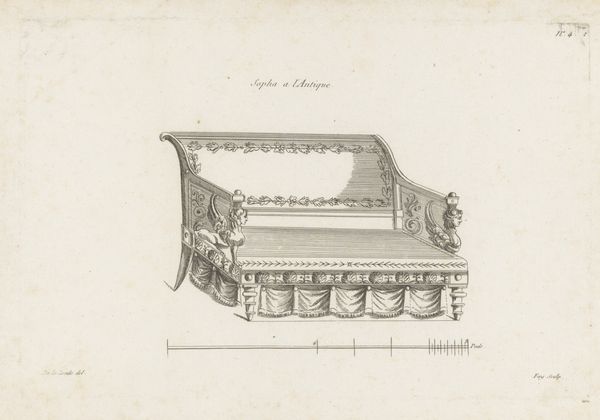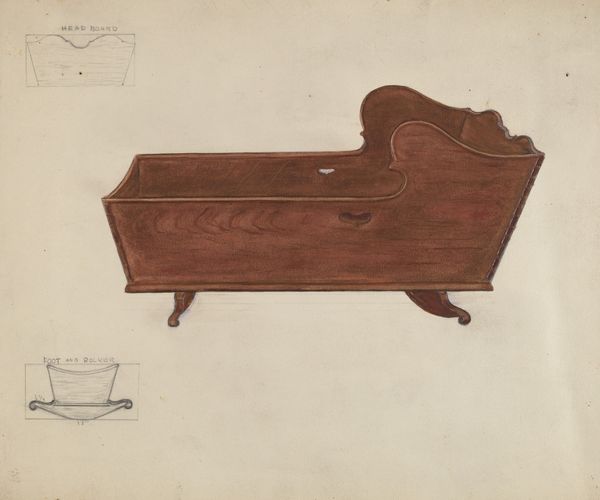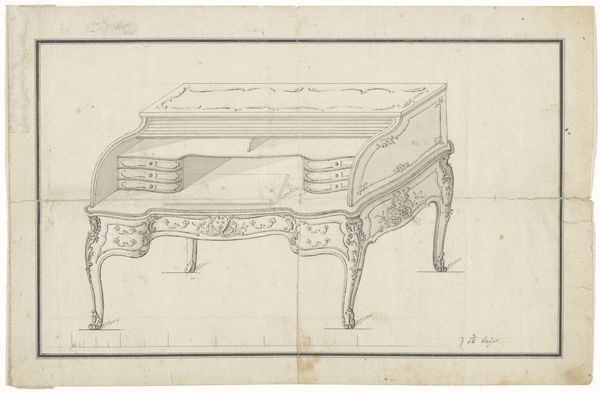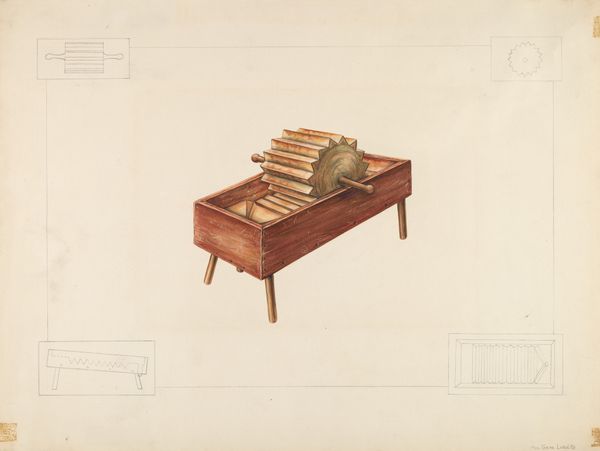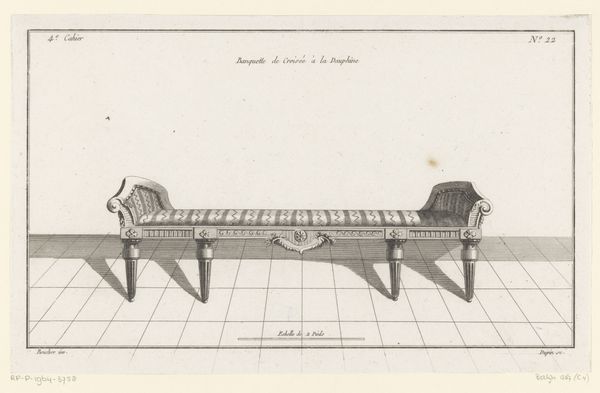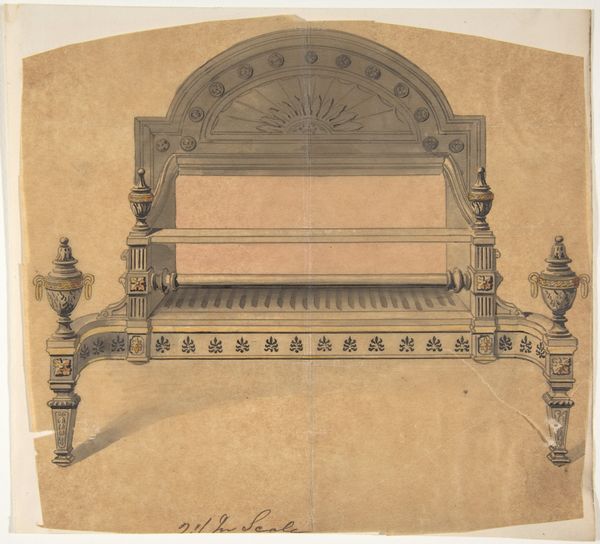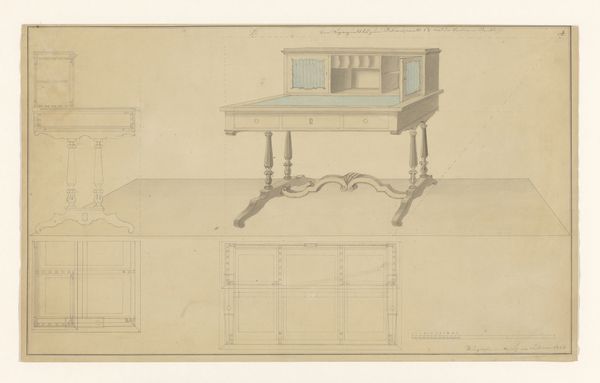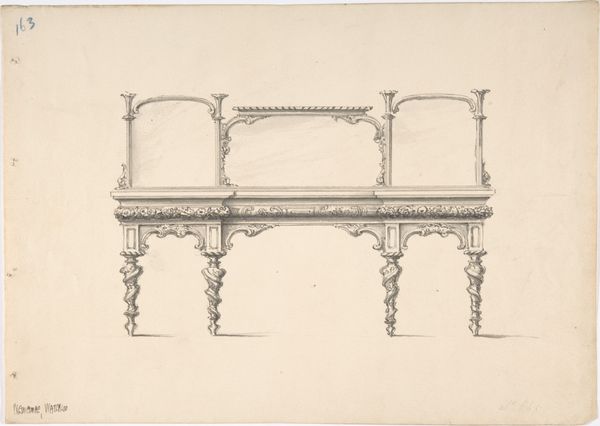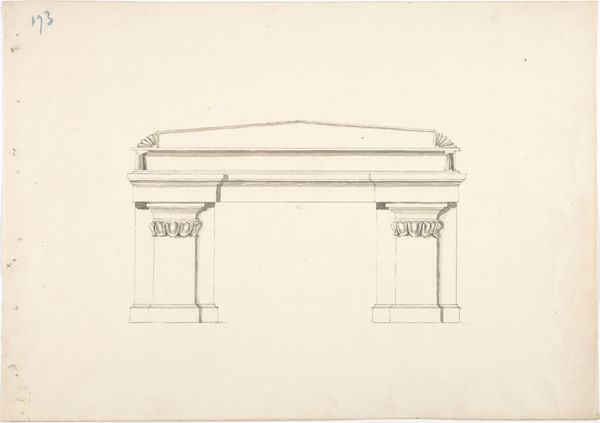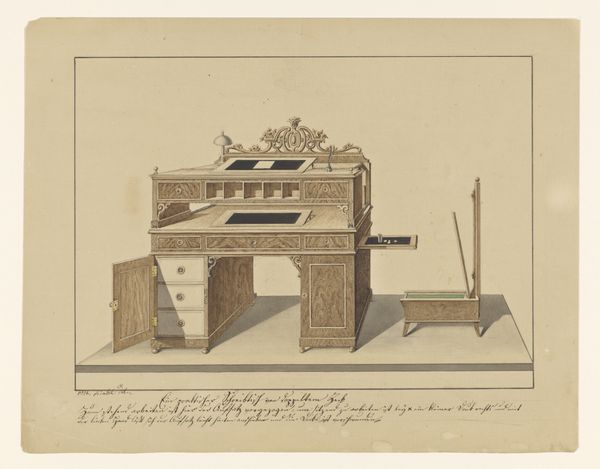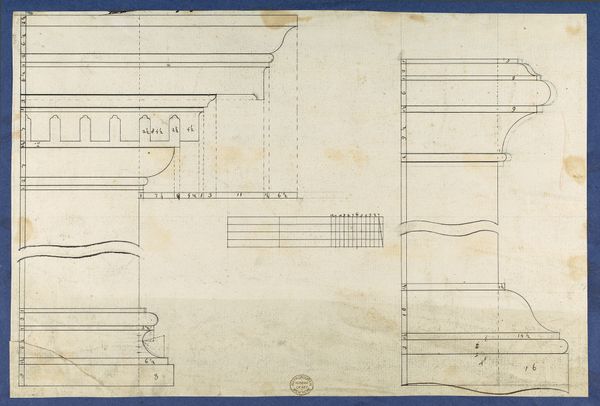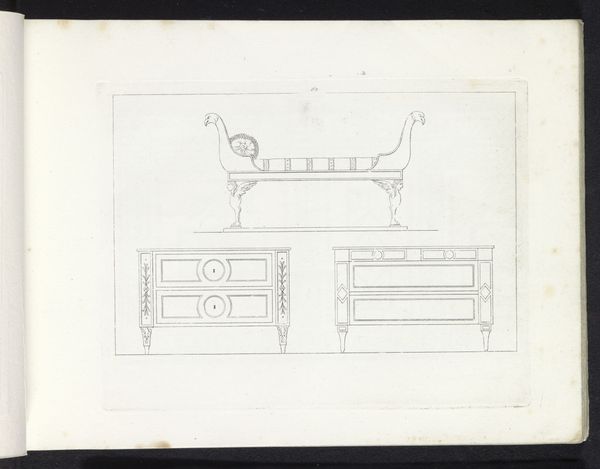
drawing, pencil
#
drawing
#
historical design
#
aged paper
#
form
#
pencil
#
line
#
decorative-art
Dimensions: height 205 mm, width 271 mm
Copyright: Rijks Museum: Open Domain
Curator: Before us is a drawing from 1823 titled "Ontwerp voor een beklede canape," which translates to "Design for an Upholstered Sofa." The artist is Carl Wilhelm Marckwort. It's rendered in pencil on what looks to be aged paper, offering a detailed proposal for a decorative piece. Editor: It has an interesting balance of delicacy and formality. The precise lines give it an architectural feel, but the ruffles and floral details soften the overall impression. I get a distinct sense of early 19th century upper-class taste. Curator: Precisely. Consider the socio-political context of the time; the decorative arts played a vital role in signifying status. Objects like these sofas weren’t just furniture; they were statements about the owner's wealth and social standing, carefully curated for public display within the domestic sphere. Editor: The rosettes at either end catch my eye. They feel almost solar in their design. I wonder if they were intended to evoke ideas of domestic harmony and a sort of miniature sun radiating throughout the home? Also, note the almost obsessive detail with the swags, repeated all around and creating a specific effect to create the idea of gathered luxury. Curator: Good observation. I'd argue these classical motifs weren't simply about aesthetics but part of a broader cultural language that evoked ideals of order and sophistication that connected the present era with idealized classical pasts. It projects stability, an important quality considering post-revolutionary Europe. Editor: I agree. Also consider how this kind of sofa would dictate posture. The low height and sloping back are not accidental; they reinforce certain body positions, an effect echoed later in the psychology of design. I find myself curious how influential pieces of furniture can have that lasting power. Curator: That brings up a larger point; who had the social permission, the actual right to repose? Designs like this shaped private life, reinforcing hierarchies. Editor: Reflecting upon Marckwort's rendering, it offers us a peek into both an aesthetic and social universe, an age where form truly did serve function, even in relaxation. Curator: It's fascinating how one drawing of a sofa encapsulates an era's ambitions, aspirations, and the unspoken rules that governed it.
Comments
No comments
Be the first to comment and join the conversation on the ultimate creative platform.
